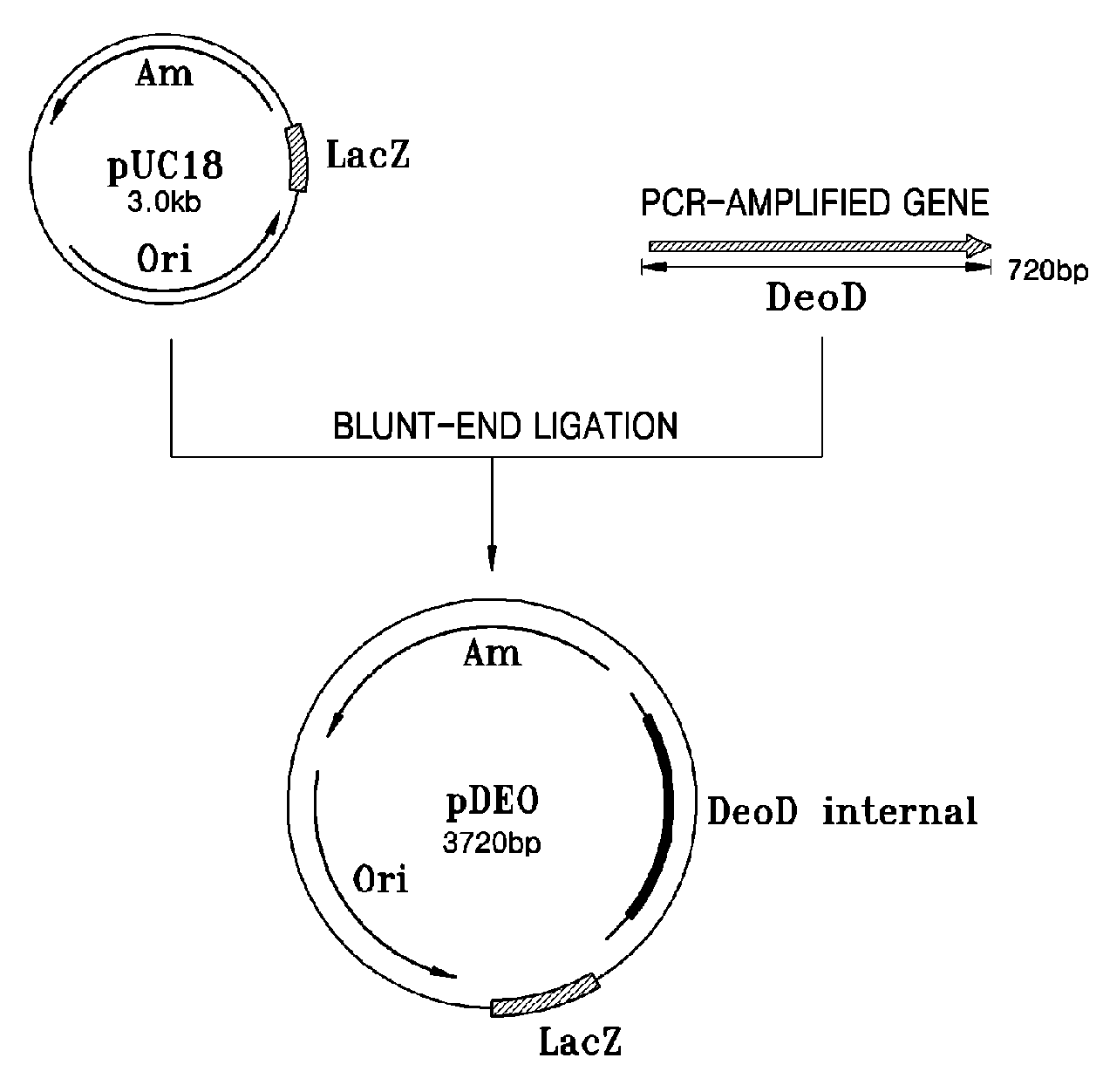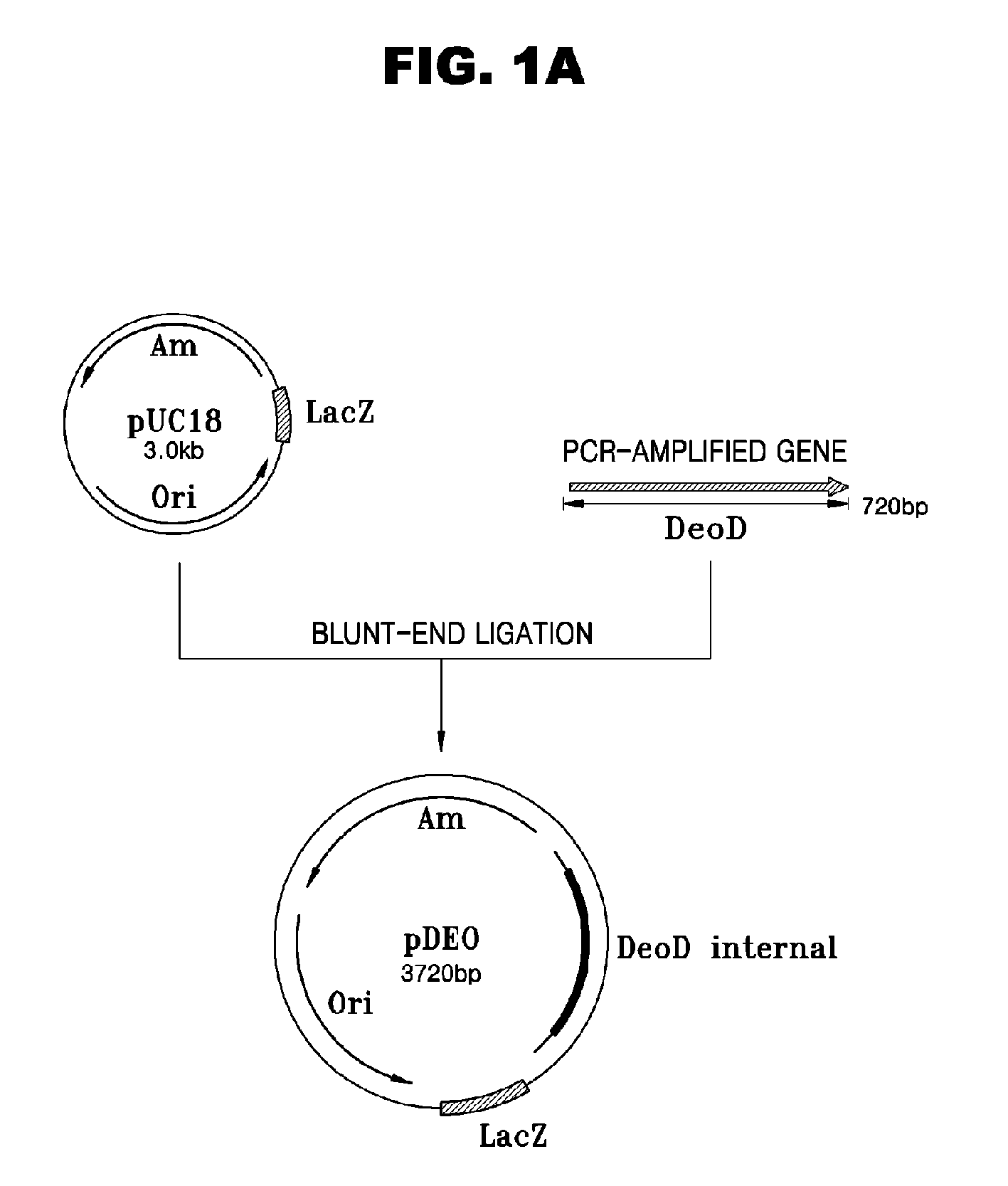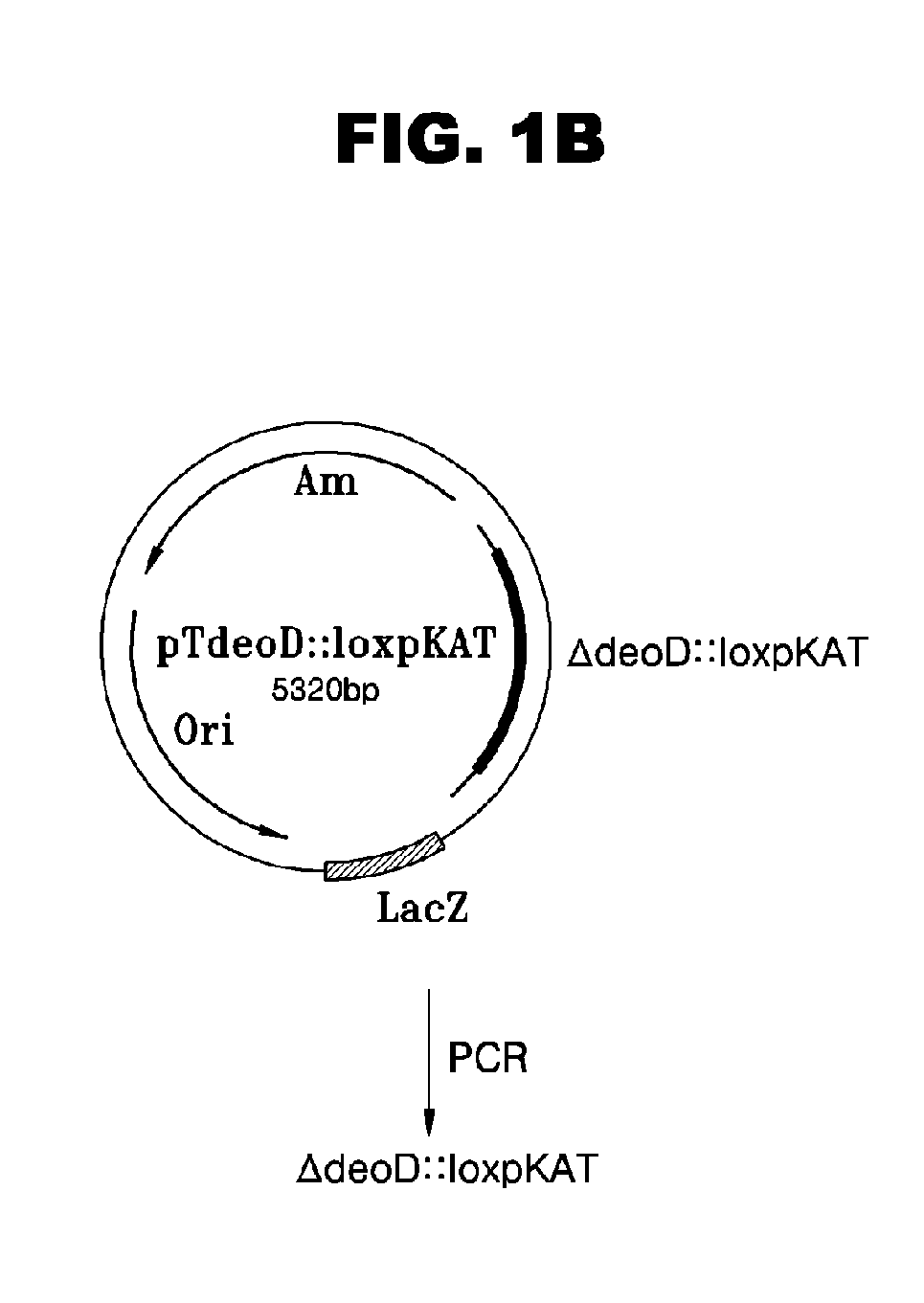Escherichia Strain Capable of Converting Xmp to Gmp and Maintaining the Inactivated State of Gene(s) Associated with Gmp Degradation and Methods of Using the Same
a technology of gmp and xmp, applied in the field of escherichia strain capable, can solve the problems of hindering the growth of microbials, reducing the survival rate of microbial strains used in enzymatic conversion, and reducing the production of gmp, so as to achieve the effect of convenient selection
- Summary
- Abstract
- Description
- Claims
- Application Information
AI Technical Summary
Benefits of technology
Problems solved by technology
Method used
Image
Examples
example 1
Construction of Recombinant Plasmid and Inactivation of deoD Gene Using the Recombinant Plasmid
[0043]About 720 bp DNA fragments containing the open reading frames (ORFs) of deoD genes were amplified by PCR using genomic DNAs of E. coli GPU1114 (Accession No. KCCM-10536) as templates and oligonucleotides as set forth in SEQ ID NOS: 1 and 2 as primers. The PCR was performed at 94° C. for 30 seconds for denaturation, 50° C. for 30 seconds for annealing, and 68° C. for 1 minute and 30 seconds for extension for 35 cycles.
[0044]After the PCR products were size-fractionated by 0.1% agarose gel electrophoresis, bands containing 720 bp DNA fragments were purified. The DNA fragments were ligated into the HindII site of pUC18 cloning vectors (Promega Co.) at 16° C. overnight (see FIG. 1A). The resultant recombinant plasmids pDEO were transformed into E. coli DH5 α, the obtained transformants were smeared onto solid media containing ampicillin (50 mg / L) and cultured at 37° C. overnight.
[0045]Co...
example 2
Construction of Recombinant Plasmid and Inactivation of aphA Gene Using the Recombinant Plasmid
[0049]About 714 bp DNA fragments containing the ORFs of aphA genes were amplified by PCR using genomic DNAs extracted from the E. coli DKO-ud obtained in Example 1 as templates and oligonucleotides as set forth in SEQ ID NOS: 3 and 4 as primers. The PCR was performed at 94° C. for 30 seconds for denaturation, 55° C. for 30 seconds for annealing, and 68° C. for 1 minute and 30 seconds for extension for 35 cycles.
[0050]After the PCR products were size-fractionated by 0.1% agarose gel electrophoresis, bands containing 714 bp DNA fragments were purified. The DNA fragments were ligated into pGEM-T-easy cloning vectors (Promega Co.) at 16° C. overnight (see FIG. 2A). The resultant recombinant plasmids pAPH were transformed into E. coli DH5 α, the obtained transformants were smeared onto solid media containing ampicillin (50 mg / L) and cultured at 37° C. overnight.
[0051]Colonies grown on the solid...
example 3
Construction of Recombinant Plasmid and Inactivation of appA Gene Using the Recombinant Plasmid
[0055]About 1.3 kb DNA fragments containing the ORFs of appA genes were amplified by PCR using the genomic DNAs extracted from the E. coli DKO-ud obtained in Example 1 as templates and oligonucleotides as set forth in SEQ ID NOS: 5 and 6 as primers. The PCR was performed at 94° C. for 30 seconds for denaturation, 55° C. for 30 seconds for annealing, and 68° C. for 1 minute and 30 seconds for extension for 35 cycles.
[0056]After the PCR products were size-fractionated by 0.1% agarose gel electrophoresis, bands containing 1.3 kb DNA fragments were purified. The DNA fragments were ligated into pGEM-T-easy cloning vectors at 16° C. overnight (see FIG. 3A). The resultant recombinant plasmids pAPP were transformed into E. coli DH5 α, the obtained transformants were smeared onto solid media containing ampicillin (50 mg / L) and cultured at 37° C. overnight.
[0057]Colonies grown on the solid media wer...
PUM
| Property | Measurement | Unit |
|---|---|---|
| Acidity | aaaaa | aaaaa |
| Concentration | aaaaa | aaaaa |
| Concentration | aaaaa | aaaaa |
Abstract
Description
Claims
Application Information
 Login to View More
Login to View More - R&D
- Intellectual Property
- Life Sciences
- Materials
- Tech Scout
- Unparalleled Data Quality
- Higher Quality Content
- 60% Fewer Hallucinations
Browse by: Latest US Patents, China's latest patents, Technical Efficacy Thesaurus, Application Domain, Technology Topic, Popular Technical Reports.
© 2025 PatSnap. All rights reserved.Legal|Privacy policy|Modern Slavery Act Transparency Statement|Sitemap|About US| Contact US: help@patsnap.com



